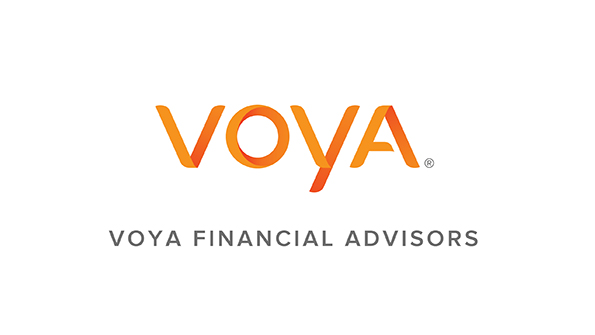By Russ Reinhart
Every advisory business experiences growing pains. But with margins tightening and competition for top talent at a premium, many advisors are enduring the squeeze and delaying critical choices about how to push their business growth to the next level.
As a result, these advisors are finding themselves over-servicing current clients, chasing unqualified leads and managing nearly every aspect of business operations. It’s unsustainable, and eventually something has got to give.
The challenges that plague nearly every advisor at some point along their path to growth fall into four distinct categories. Fortunately, there are clear steps advisors can take to turn these obstacles into opportunities.
1. The Capacity Cap
Many advisors dread the day when client demand exceeds current resources, and when the operational workload begins to prohibit new business growth. For an individual advisor, this threshold often occurs when managing between 50 and 75 households or about $25 million in assets under management.
It’s at this point that advisors must decide how the right processes, staff and partners can help them better manage what they’ve created—while still retaining control of the business. Advisors have a few options. They can bring on relationship managers and junior advisors to handle second- and third-tier clients while they maintain the firm’s high-touch relationships. They can outsource or automate time-consuming tasks or even hire a full-time executive to manage the business so they can remain focused on client service and nurturing leads.
Advisors can also look outward for opportunities to relieve the operational burden, such as joining an enterprise RIA platform that would bring built-in scalability and technology resources.
No matter the chosen path, advisors reaching the capacity cap should consider how the right talent, technology and resources will scale with their firm. Too often, advisors invest in a patchwork of fixes designed to create more hours in the day. Growth-minded advisors will recognize that they need a holistic, long-term plan for their firm.
2. The Lead Gen Limitation
Identifying and courting new clients is easier said than done, and many advisory firms admit they don’t properly track and manage their leads. A 2016 study found that although about nine out of 10 advisory firms have a CRM system, just 38 percent said they formally tracked leads.
This data points to a larger industry challenge: identifying qualified leads that are worth chasing. They’re the needle in the haystack, the hidden line item in a long log of prospects who likely don’t meet the asset threshold, already have an advisor or would rather opt for a robo-solution.
To track down these qualified prospects, advisors need to think beyond competitive, outsourced lead gen services and generic seminars. Instead, advisors should consider carving out a niche and putting all sales efforts into tailored messages and tactics. For example, an advisor focused on charitably inclined prospects can attend relevant fundraisers and community events, and develop tailored presentations focused on how to create a philanthropic legacy through an estate plan. An advisor whose niche is advising clients through life transitions should create materials that forge partnerships with, say, local divorce attorneys.
This specialized focus should continue once a client signs on. Advisors must define the centerpiece of their financial planning approach—the reason clients choose them over every other solution. This approach should be an integral part of every interaction with clients to demonstrate value and a perspective they won’t be able to get at another firm.
Creating a powerful, memorable and personalized financial planning experience can also be a huge factor in driving referrals. Clients who can easily recount their advisory experience with friends and family will automatically convey the value an advisor provides. This experience creates a considerable leg up in one of the most lucrative ways to gain new assets.
3. The Tech Trade-off
Having the latest technology tools sounds great in theory. Unfortunately, many firms commit to the investment and then whiff on the integration—rendering those shiny new platforms useless for an advisory firm’s staff, clients or both. Worse even is the need for a costly course correction years later, when a patchwork of trading platforms, CRM systems and portfolio management tools ultimately create more inefficiencies than they’re worth. Thus, the pressure is on to select the right solution.
Until recently, advisors have been forced to prioritize financial planning or investment tools when making tech upgrades. However, more solutions are being introduced that merge these two core aspects of an advisor’s activities on a single platform. As Wealth Management Today notes, financial planning is becoming a larger part of advisors’ daily workflows. Solutions that tackle both spheres are becoming more widespread, increasing the pressure to select the right tool.
But when it comes time for an inevitable technology upgrade, many advisors are faced with an overwhelming number of options and a set of competing priorities. Should the firm invest in solutions to address client user experience or update vital middle- and back-office functions? Do clients really need mobile access? Can these compliance tools be trusted?
In selecting technology to power growth, advisors must prioritize this integration. Solutions should scale as the business grows, and a firm’s technology strategy should align with the rest of the firm’s offering—today and in the future.
4. The Branding Breakdown
Some advisors develop their reputation organically, based on the types of clients they serve, their investment strategy and/or their business model. Some advisors align their practice with a big-name brand to benefit from increased recognition and credibility.
But growth-minded advisors set out to establish an intentional, memorable brand reputation on which to build their business. This often includes formalizing a firm’s culture and values, defining a niche in the market, developing brand messaging or even coining a new approach to planning or investing. And the best way to bring the brand to life is by creating consistent, repeatable, scalable processes that reinforce the brand at every client touchpoint.
Embracing this proactive approach can certainly spur short-term opportunities, but it can also pay dividends when it comes to succession planning. If the brand revolves around an individual advisor, then sale of the practice or the transition to a successor may be jarring for clients. But if advisors can infuse their approach into all aspects of their business, they can establish trust and consistency that help clients ride out the transition.
Every advisor faces inevitable growing pains. By creating a personalized, consistent approach that can scale with the business that clients can rely on, advisors will set their firms on the right track for growth.
Russ Reinhart, CFP, is Managing Director for Wealthcare.




